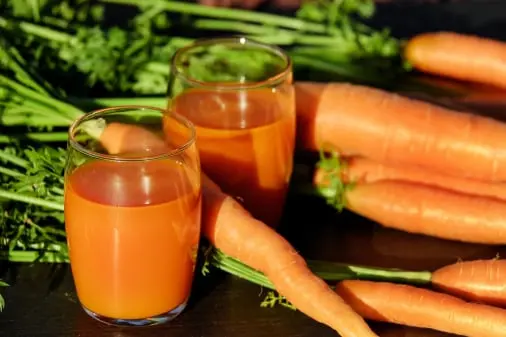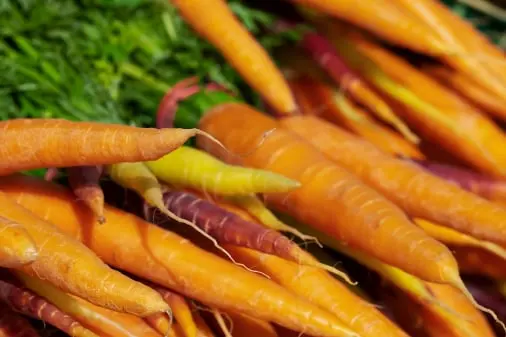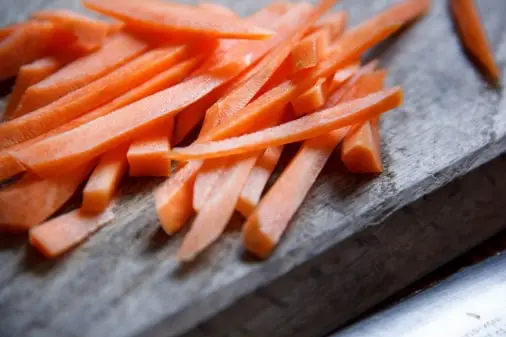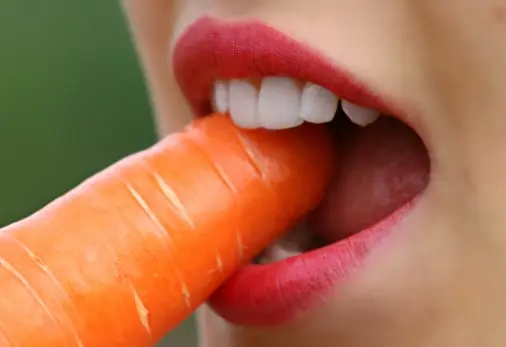Carrot packing app:
Carrot packing app: Less carrot packing waste, more profit! Carrot packing app for full carrot washing, sorting, bagging: carrot inventory, carrot quality control, carrot traceability & recalls, long term carrot storage with zero carrot waste.

Carrot Packing App for accurate order filling & production
View Packing App Specifications.
CARROT PACKING TECHNOLOGY
Carrots are presented in different packages, such as plastic bags, wooden or cardboard boxes and trays of different materials and weights. Among the presentations for fresh carrots we find the pre-cut products, which can be grated, peeled, sliced... Moreover, carrots are also intended for juice, for preserves and for baby purees.
The carrots with leaves are usually sold in bunches, and packaged in wooden or cardboard boxes, in one or half kilo bunches, sometimes prepackaged with plastic film, and arranged in one or several layers, allowing a suitable air ventilation.
The prepackaging of carrots without leaves is made in plastic bags of different sizes (1/2, 1, 2, 5 or 10kg), expanded polyethylene trays, polyvinyl chloride or propylene of 0.5 to 1kg of capacity.
The pocketed carrots are put in cardboard or wooden boxes of 10 to 12kg. The consumer usually prefers half, one and five kilos bags. Carrots are also packaged with or without leaves in trays of different materials.

Carrot packing app manages food safety
Besides, nowadays there is a wide range of presentations for fresh carrots, such as the pre-cut range, which is a process that extends the life of the product, keeping it fresh and without losing its organoleptic qualities. Thus, there are bunched carrots wrapped in polypropylene and all types of presentations in plastic bags: peeled baby carrots, even or wavy slices, carrot sticks, grated, etc.
Apart from the fresh consumption, carrot also have other commercial applications, like preserved, baby food, juice or in the chemist’s, in crystallized carotene form.
CARROT PACKING AUSTRALIA
An Ishida multihead weigher at premium Irish vegetable grower Leo Dunne has played a central role in helping the company expand its operation into the supply of processed carrots.
Leo Dunne has been delivering fresh Irish products to the retail sector for generations. Recently the company recognised that oversized or irregular carrots that were not suitable for the prepared carrot market were nevertheless still high-quality products, which could be successfully marketed through further processing. It therefore required an effective processing and packing line in order to maximise the potential of this new market.
The Ishida 10-head waterproof mid-range model with 3-litre hoppers is delivering excellent accuracy and reliability, achieving around 55 packs/min on 500 g bags of carrots, with an overall accuracy rate of 98%.
Equally important, the machine’s ease of operation, including fast start-up using the simple-to-use remote control unit (RCU), gives it the flexibility to cope with the varying production demands of the Leo Dunne operation.
Leo Dunne specified the Ishida weigher for the new line based on the company’s established reputation in the marketplace.

Carrot Packing App for reduced food & fresh produce waste
“We knew Ishida had a great name in the industry and had received positive reports from other users,” explained Leo Dunne Manager Emmet Dunne, “and we have not been disappointed with our choice.
“The machine’s ease of operation means our staff all like it. It is also far more intuitive than other weighers, so that if there are any minor issues during production, the machine will identify these and inform operators how to fix them. This is vital to maintaining production.”
And while the machine’s reliability is an obvious benefit, so too, says Dunne, are the high levels of after-sales service provided by Ishida and its agent, SF Engineering.
“Knowing we have someone on the spot who can deal with any issues we have is absolutely critical to ensuring we can meet the requirements and deadlines of our retail customers,” he said.
The Ishida 10-head multihead is part of a complete line devised and installed by SF Engineering which also includes a swingloader, a bespoke sorting table, an elevating conveyor and support platform, and a Ceia metal detector.
Leo Dunne anticipates that the new facility will pay for itself within three years. And while the system was designed to handle carrots, it can also be used for other products, giving the company enormous flexibility and the ability to react to market trends and developments.
In addition, by using all its surplus stock, Leo Dunne has achieved major efficiency gains and a significant reduction in its carbon footprint.
How Carrots Are Harvested & Packed
You are currently viewing How Carrots Are Harvested & Packed
This lovely edition is all about carrots! Carrots come in all colors, shapes, sizes and slices! There really is such an innovative market with carrots right now, with everything from carrot “chips” to rainbow carrots and everything in between. After trying rainbow carrots, I have honestly never been more excited about carrots than I am right now!

Carrot packing app manages supplier food quality and traceability
Different Harvesting Methods for Carrots
When growing for the fresh-cut market (think of baby carrots, sliced carrots, etc.), those carrots are mechanically harvested, processed and packed. However, straight-to-market carrots (as seen in the picture above) are harvested by hand.
Carrot Harvest
Carrot Harvest & Packing
The fresh market process for harvesting and packing carrots is as follows.
Harvesting Carrots
Harvest – The carrots are hand harvested. This consists of workers pulling carrots out of the ground by their stems. At the same time, they are also checking for the quality of the carrots.
Carrot Harvest - Hand Harvesting Carrots
Forming Bunches – This step differs from harvester to harvester. The worker either harvests the carrots, sets them on the ground, and then forms bunches from the pile. Or, the worker harvests the carrots and forms bunches as they harvest. The goal is for the workers to form the bunches based on the uniformity of the harvested carrots.
Carrot Harvest - Tied Bunches
Truck Load – A designated worker goes through the rows to pick up the carrot bunches and takes them to the nearby truck. This is a smaller truck, as it is only transporting the carrots to a nearby washing area.
Carrot Harvest - Harvested Carrots Ready for Packing
Quality Control – After the carrots are loaded on the truck, a quality control worker goes through and checks the quality of the harvested carrots.
Carrot Harvest - Quality Control
The carrots are then transported to the nearby packing area. This packing area is unique as it is an outdoor packing line, which is not very common.
Packing Carrots
Wash Step – Once the carrots arrive at the washing area, they are ran through a sanitized wash using recycled/reused wash water. Since carrots are root vegetables and grow in the soil, this step is needed to remove soil from the carrot surface.
Carrot Packing - Wash Step with Sanitized Water
Packing – The washed carrots are packed into boxes and are ready to be shipped to the customer.
Carrot Harvest - Packing
The palletized boxes are taken to the cooler until further transport.